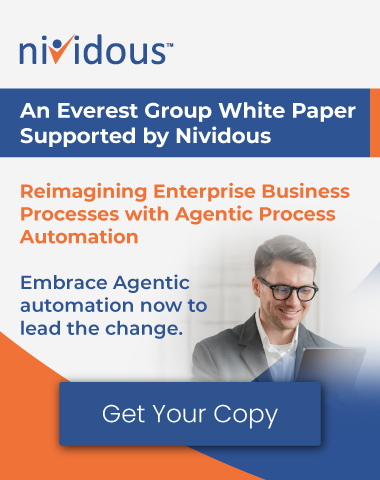If you haven’t been living under a rock for the past few months, you may have heard a lot of buzz about generative AI.
Some people say it’s poised to change the way we do business every day. Others say it’ll be the end of our work economy as we know it. Still others are asking, What is generative AI, anyway?
Whatever camp you’re in, you’re here because you want to know more. Below we cover the basics of generative AI, including how you can start harnessing the power of AI in your own business today.
Generative AI: The Basics
 What is generative AI?
What is generative AI?
Generative AI gets its name from its purpose. Put simply:
Generative AI is an artificial intelligence model used to generate a human-like response.
Most generative AI models today are language-based, but a few are art or image-based as well. The goal of generative AI is to produce an answer—whether in the form of text or images—in response to a user’s request that closely replicates what a human might respond to the same request.
For instance, a user may ask a language-based AI model to write a brief summary of a book they’ve written and submit the book for the system to review. After the context of the book has been ingested, the AI should ideally produce an accurate summary similar to a human’s work product. The difference is, it might take hours or days for a human to read and understand the book’s contents; in contrast, AI can do the same function in just seconds.

Ready to revolutionize your business with Generative AI?
Watch our on-demand webinar to learn how GenAI can drive innovation, reduce costs, and enhance customer experiences. Dive into real-world case studies and explore the Nividous platform demo for a comprehensive understanding.
 How does generative AI work?
How does generative AI work?
If you’ve heard the acronym GPT associated with generative AI lately, that’s because the latest language-based AI models rely on Generative Pre-trained Transformers (GPT) to function.
Essentially, GPT platforms are a set of large language models (LLMs) that have been trained using huge sets of data. Artificial neural networks use transformer architecture to understand this data and use their training to generate a human-like response.
In other words, creators of generative AI tools feed vast quantities of data—commonly taken from internet posts, user inputs, and anywhere else the system can “learn” how humans speak and write—into a neural network that digests the data and reforms it into a response that hopefully makes so much sense it could have been written by a person.
 What are the strengths and limitations of generative AI?
What are the strengths and limitations of generative AI?
Note the word “hopefully” in the above explanation.
The key to understanding the accuracy of an AI model is to remember the P in GPT. Because AI models are pre-trained on limited data sets, the responses they can generate are also limited to the information found within those data sets.
That means, if you ask a generative AI chatbot who the current president is, it will list whoever the president was at the time that it was trained. If the AI model hasn’t received any current updates on the topic that was requested, there is a danger that the AI will confidently produce expertly written—though completely incorrect—information.
This issue can either be mitigated or exacerbated by training the AI to accept user feedback as relevant data. For example, if a user corrects the AI by saying, “No, the president is Mickey Mouse,” the AI will take that information into account next time someone asks who the current president is. If users feed correct information into the algorithm, the information will stay current. But if the ingested data is faulty, the response will be faulty as well.
Many people worry the existing data sets are corrupt even without the risk of bad feedback. After all, many current LLMs have been assembled from human-generated content online. Anyone can post anything online; if the AI sees the same mistake repeated enough times, it may begin to believe the mistake is actually correct.
So, can you truly trust the results of generative AI? Sort of.
A generative model that was trained with a huge, diverse data set can be reliable for many topics. If you plan to use AI for critical tasks—such as obtaining medical advice or legally defending yourself in court—it’s best to double-check the results with human experts who can point out instances where the AI might have gotten it wrong.
No one truly knows how powerful generative AI will become in the future as data sets improve and become even more robust. It’s not too difficult to imagine a world where AI handles most of the tedious work of daily life and leaves people free to pursue more meaningful activities that can’t be replicated with a computer.
Some people worry that the use of generative AI could potentially kill human creativity entirely. After all, if AI can produce stunning artwork in just seconds, people might be less inclined to try their own hand at creating art.
The only thing that’s certain at this point is that AI in all its forms is advancing quickly, regardless of society’s positive or negative feelings about it. It should be interesting to see what changes arise from future developments.
 How can you evaluate the results an AI tool produces?
How can you evaluate the results an AI tool produces?
You can rate a tool based on its quality, diversity, and speed.
If a text-based tool produces poorly written content with lots of errors, its quality is clearly lacking. Similarly, if an image generator takes minutes to produce results when real-time responses are necessary, it won’t work for the intended application.
Evaluating diversity is trickier, but essentially you want to find a model that takes both common and uncommon data points into account, so that the results it generates are not easily biased by large swings in the data.
 What are some generative AI tools you can use?
What are some generative AI tools you can use?
Many generative AI tools already exist, and more seem to pop up every day. Some companies have even begun using these AI models for specialized functions within their businesses, such as real estate agents using a tool dedicated to writing optimized house listings, or personal trainers using AI guidance to develop customized fitness plans for their clients. In fact, you may have seen or even interacted with the results of generative AI for months without even realizing it.
If you’re interested in experimenting with the most well-known tools or even harnessing them for use in your own company, you can start with one of these “big name” generative AI tools:
- ChatGPT: This tool that has taken the internet by storm lately. It runs on OpenAI’s platform and is essentially a chat-style interface that allows the user to input requests and receive text-based results.
- Gemini: Gemini is Google’s alternative to ChatGPT. It’s another chatbot that specializes in text-based content generation.
- AlphaCode: AlphaCode is mainly used to create large-scale coding projects.
- Cohere: This is a content generation tool primarily used for sales and marketing tasks.
- Dall-e 2: This is the most recent version of OpenAI’s image generation tool. Unlike ChatGPT, which produces text-based results, Dall-e generates art and images based on requests made by the user.
It’s worth noting that OpenAI’s latest language-based AI model is known as GPT-4, and their image generator is currently Dall-e 2, but you can expect those version numbers to change with further releases. Make a note of the AI engine that powers the tool you choose, so you can begin to see where each data set (and therefore each generated response) is coming from.
Using Generative AI In Business
How can you use generative AI in the workplace?
Where generative AI truly shines is in revolutionizing the workflows of engineers, researchers, writers, scientists, and anyone who needs a creative boost from time to time. Since generative AI does have some limitations, it’s best to use AI tools to streamline the work of humans rather than replace humans in most industries.
Some of the areas generative AI can help with include:
- Generating videos and images
- Brainstorming and outlining content
- Coming up with marketing ideas
- Note taking
- Developing code
- Gene sequencing
- Building 3D models
- Designing complex systems (with expert oversight)
- Generating music
- Imitating voices and other sounds
Need to implement AI in your business and achieve results quickly?
Nividous can help you customize and build your company’s ideal AI solution in just weeks. Ask about our Quick Start Guarantee.


 What is generative AI?
What is generative AI? How does generative AI work?
How does generative AI work? What are the strengths and limitations of generative AI?
What are the strengths and limitations of generative AI? How can you evaluate the results an AI tool produces?
How can you evaluate the results an AI tool produces? What are some generative AI tools you can use?
What are some generative AI tools you can use?


